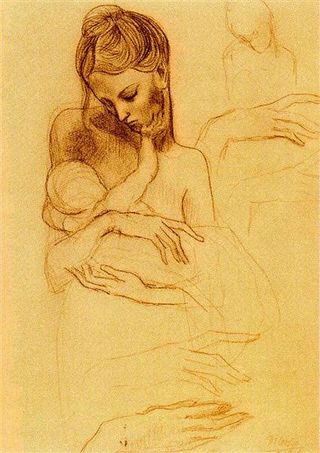
Most American children were raised by two parents, once. But that’s happening less and less. By last count, more than half of all women under 30 who give birth in the US are without a spouse. A small majority, 59 percent, of all mothers are still married when their children are born. But those numbers are going down. All of 72 percent were married in 1990; in 1970, it was 89 percent.
Most single mothers are young. In 1970, only a third of teenage mothers were unmarried, but two thirds were unmarried in 1990, and almost 9 out of 10 were going it alone in 2009. That’s hard. It’s hard to raise children with help—with generous offers of time, money and emotional backup. It’s much harder to raise them without.
For the better part of the 100,000 odd years that we lived as hunters and gatherers, most mothers probably got help from their children’s fathers. In the Central African Republic, Aka fathers are famously “attached” to their children. They have an infant in their arms roughly an hour every day; and when they're out on a net hunt, their infants are within sight or earshot most of the time—says Barry Hewlett, who’s lived with the Aka, on and off, for most of his adult life. And in Paraguay, Aché husbands try to be good providers. They hunt for the better part of every day, and they provide most of the calories. Hunters who bring home the “bacon” are more likely to become fathers. When Kim Hill, who lived with the Aché for years, asked what kind of man they wanted to marry, women answered: “He has to be a good hunter.”
Evidently, not all of them are. Some Aché women have as many as 10 or 20 husbands, and most have children by more than one man. That means that many sons and daughters are raised by stepfathers, or by single moms. And though 4 out of 5 Aka kids under 5 live with both of their parents, fewer than a third do by the time they’re 20. Up to half of Aka teenagers are living with stepparents, and a quarter are living with single moms.
But over the course of history—or over the last 10,000 odd years since we've lived in settled societies as farmers—the number of single mothers has probably grown. Up to 10 million of the 60 million people who lived under Roman emperors was a slave, and marriage for slaves was not allowed. Conubium was the legal capacity to marry, and there was no conubium with slaves. So slave women gave birth in their masters’ houses, on their masters’ estates. And they raised those children as single moms.
In the Middle Ages, plenty of women gave birth to the sons and daughters of priests. From the mid-13th century to the late-14th century alone, popes gave dispensations to at least 255 sons ex fornicatione nati—conceived in sin. And many others got dispensations from bishops. A few years into the Reformation, when Sebastian Meyer wrote a tract against the bishop of Constance, he guessed that as many as 1500 children a year were born to diocese priests, for which the bishop got a cradle fee of 4 gulden each—plus fees for keeping a concubine (stuprum voluntarium), for adultery and fornication, and for rape (stuprum violetum). Those children would have been raised without much help from their dads.
Into the modern era, single motherhood was common; we know that, partly, because of the bastardy ratio. In records from over 400, 16th- through 19th-century English parishes, after a modest start at around 2%, illegitimate births climbed fairly steadily to a high of almost 6%—to 1830, when the records ran out. But those estimates are probably low. Because, for one thing, illegitimate babies who died in infancy were probably left off the records. And because, for another thing, illegitimate babies who survived weren’t always counted—in London, the rate of nonregistered births ran as high as 70%. Besides which, marriages were often backdated to cover a prenuptial pregnancy up. In the registers of 77 parishes, in 24 English counties, from 1550 to 1820, roughly a third of 1855 brides gave birth within 8-½ months after a trip to the altar. Taking all that into account, the figure for births to single mothers could have been up to 50%. Many of those mothers were servants. Many of the fathers were masters.
Now, as then, kids who grow up with more helpers do better by a number of measures. They tend to have more money, they get sick less often, and they stay in school longer.
Most mothers take cash, childcare and emotional backup wherever they can find them. And most fathers probably want to help. But in many cases, they can’t. Across the broad sweep of human existence, children in egalitarian societies seem more likely to have been raised by 2 parents. Whether or not that's true, they need all the help they can get.


